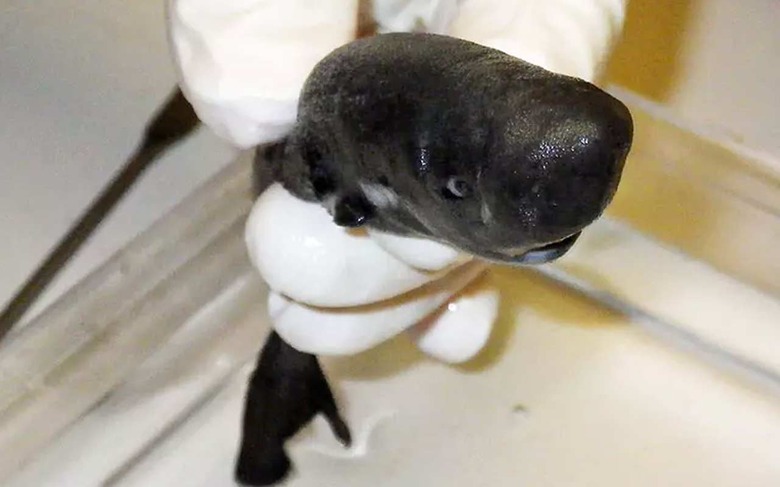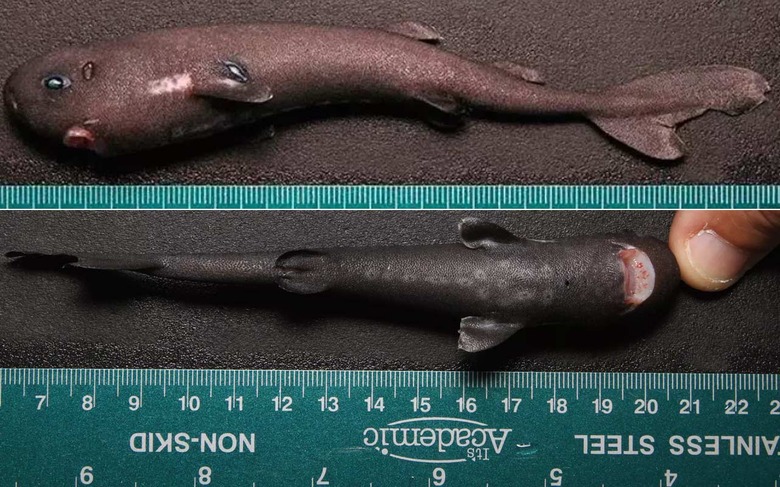Glowing Pocket Shark Is Entirely New To Science
One of two pocket sharks ever discovered was part of a study published this week in Zootaxa. This monster's pectoral fins sit just below two pockets, both containing glands that produce bioluminescent liquid. We call it a monster only because it has the name "shark" attached. In reality, this animal's full size is around that of an adult human hand.
This particular specimen is approximately 5.5-inches long and it was first discovered back in February of the year 2010. This creature hasn't been an absolute secret since then – it's just been part of a rather intense study. And there are only two pocket sharks ever known to have been found in the history of our world – and this one's a new species.
When you find a new species of animal, you don't just jump up and tell the whole scientific world that you've found something miraculous. You study it, you test it, you verify that what you've found is the real deal. You spend over a half-decade exploring the details to make certain you've missed nothing, and do indeed have something to present that's entirely new to science.

The two pocket sharks found in our oceans here on Earth were both found separate from one another. Both were from separate parts of the world, in separate oceans. The first pocket shark found and reported was first discovered in 1979 in the Nazca Submarine Range off the coast of Chile – it was first reported in 1984.
So between the year 1984 and 2010, no pocket sharks were found or reported anywhere, in any body of water. Then in 2010, bang, another pocket shark. It's not unheard of that new species of animals are found in our oceans – we've only explored a very small bit of the entirety of the deep waters on our planet.
"The fact that only one pocket shark has ever been reported from the Gulf of Mexico, and that it is a new species, underscores how little we know about the Gulf – especially its deeper waters – and how many additional new species from these waters await discovery," said study co-author Henry Bart of Tulane University Biodiversity Research.

Research on this shark was published with code DOI:10.11646/zootaxa.4619.1.4 in Zootaxa 4619 (1): 109-120. This paper went by the title "A new Western North Atlantic Ocean kitefin shark (Squaliformes: Dalatiidae)
from the Gulf of Mexico," and was published just this week. Authors of this paper included Mark A Grace, Michael H Doosey, John SS Denton, Gavin JP Naylor, Henry L Bart Jr, and John G Maisey.
